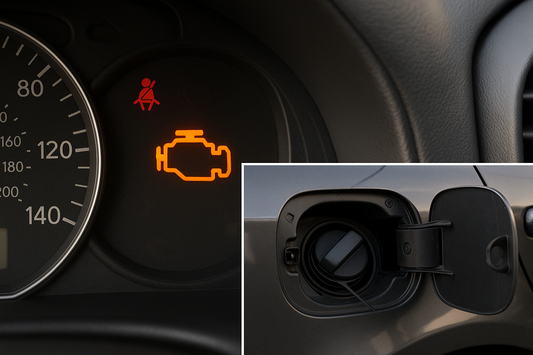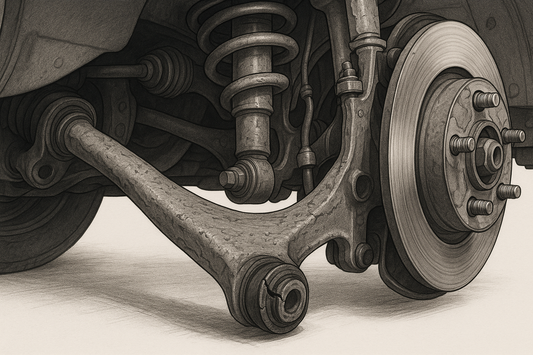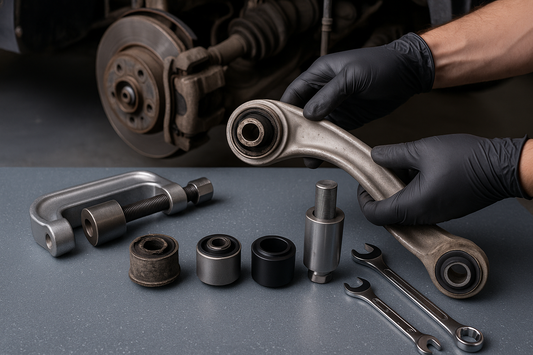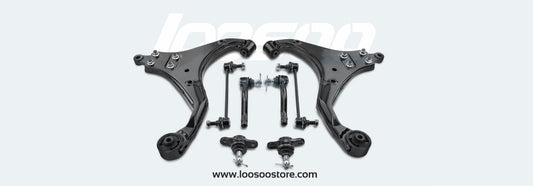En lo que respecta a la seguridad y el rendimiento del vehículo, el sistema de frenos desempeña un papel crucial. Entre los diversos componentes del sistema de frenos, los discos de freno (también conocidos como rotores) son fundamentales. Pero ¿influyen los discos de freno en el rendimiento y la seguridad de su vehículo? Esta guía completa explorará cómo los discos de freno afectan la eficiencia de frenado, sus diferentes tipos y las ventajas de actualizarlos o mantenerlos adecuadamente.
Comprensión de los discos de freno
Discos de freno (rotores):
Función: Los discos de freno son los componentes giratorios de un sistema de freno de disco que las pastillas de freno sujetan para crear fricción y reducir la velocidad del vehículo.
Material: Generalmente está hecho de hierro fundido, aunque las variantes de alto rendimiento pueden utilizar materiales carbocerámicos o compuestos.
Diseño: Disponible en varios diseños, incluidos sólidos, ventilados, perforados y ranurados, cada uno de los cuales ofrece distintos beneficios.
Cómo los discos de freno afectan el rendimiento del vehículo
Eficiencia de frenado
Disipación de calor: los discos de freno de calidad disipan eficazmente el calor generado durante el frenado, evitando el desvanecimiento de los frenos y manteniendo la potencia de frenado.
Rendimiento constante: Los discos bien mantenidos y de alta calidad garantizan un rendimiento de frenado constante, lo cual es crucial para la seguridad, especialmente durante paradas de emergencia.
Seguridad
Distancia de frenado: los discos de freno efectivos acortan las distancias de frenado, lo que mejora la seguridad general del vehículo.
Control y estabilidad: Los discos de freno de alto rendimiento mejoran el control y la estabilidad, especialmente en aplicaciones de alta velocidad o de trabajo pesado.
Desgaste y longevidad
Durabilidad: Los discos de freno de calidad fabricados con materiales robustos duran más y soportan mejor el estrés y las temperaturas elevadas.
Mantenimiento: Los discos de freno mantenidos adecuadamente reducen el desgaste de las pastillas de freno y otros componentes de frenado, lo que genera menores costos de mantenimiento a lo largo del tiempo.

Tipos de discos de freno y sus beneficios
Discos sólidos
Construcción: Construcción simple y sólida sin ventilaciones internas.
Uso: Se utiliza comúnmente en vehículos estándar de bajo rendimiento.
Beneficios: Rentable y adecuado para condiciones de conducción normales.
Discos ventilados
Construcción: Tiene ventilaciones internas para mejorar la circulación del aire.
Uso: Adecuado para vehículos pesados y de alto rendimiento.
Beneficios: Mejor disipación del calor, reduciendo el riesgo de desvanecimiento de los frenos.
Discos perforados
Construcción: Cuenta con orificios perforados en toda la superficie.
Uso: Se utiliza a menudo en coches deportivos y vehículos de alto rendimiento.
Beneficios: Mejor disipación del calor y menor peso, aunque pueden ser propensos a agrietarse en condiciones extremas.
Discos ranurados
Construcción: Tiene ranuras o surcos cortados en la superficie.
Uso: Adecuado para vehículos todoterreno y de alto rendimiento.
Beneficios: Mejor disipación de calor y gases, mejor rendimiento de frenado en condiciones húmedas y mayor durabilidad.
Ventajas de actualizar sus discos de freno
Rendimiento mejorado
Respuesta más rápida: Los discos de freno de alto rendimiento ofrecen una respuesta de frenado más rápida, lo que es crucial para la conducción y las carreras a alta velocidad.
Frenado constante: los discos mejorados proporcionan un rendimiento de frenado más constante, mejorando la seguridad y el control.
Mayor seguridad
Distancia de frenado reducida: unos mejores discos de freno pueden reducir significativamente las distancias de frenado, lo que es vital para prevenir accidentes.
Manejo mejorado: el rendimiento de frenado mejorado mejora el manejo y la estabilidad general del vehículo, especialmente en condiciones adversas.
Vida útil prolongada
Durabilidad: Los materiales de alta calidad y los diseños avanzados hacen que los discos de freno mejorados sean más duraderos y resistentes al desgaste.
Ahorro de costos: si bien la inversión inicial puede ser mayor, los discos de freno mejorados pueden generar ahorros de costos a largo plazo debido a un menor mantenimiento y una vida útil más larga.
Consejos de mantenimiento para un rendimiento óptimo
Inspecciones regulares
Controles visuales: inspeccione periódicamente los discos de freno para detectar signos de desgaste, grietas o deformaciones.
Inspecciones profesionales: haga que un mecánico profesional inspeccione periódicamente su sistema de frenos para garantizar un rendimiento óptimo.
Uso adecuado
Evite el sobrecalentamiento: evite frenar bruscamente, ya que puede provocar sobrecalentamiento y daños en los discos.
Siga las pautas del fabricante: siga las recomendaciones del fabricante para el uso y mantenimiento de los discos de freno.
Reemplazos oportunos
Reemplazar cuando sea necesario: no demore el reemplazo de discos de freno desgastados o dañados, ya que esto puede comprometer el rendimiento y la seguridad del frenado.
Utilice piezas de calidad: invierta en discos de repuesto de alta calidad para garantizar durabilidad y un rendimiento óptimo.
Los discos de freno marcan una diferencia significativa en el rendimiento y la seguridad del vehículo. Al comprender los tipos de discos de freno, su impacto en la eficiencia de frenado y las ventajas de actualizarlos y mantenerlos, podrá tomar decisiones informadas para optimizar el sistema de frenos de su vehículo. Tanto si conduce ocasionalmente como si es un entusiasta del rendimiento, invertir en discos de freno de calidad y un mantenimiento adecuado puede resultar en una experiencia de conducción más segura y placentera.










